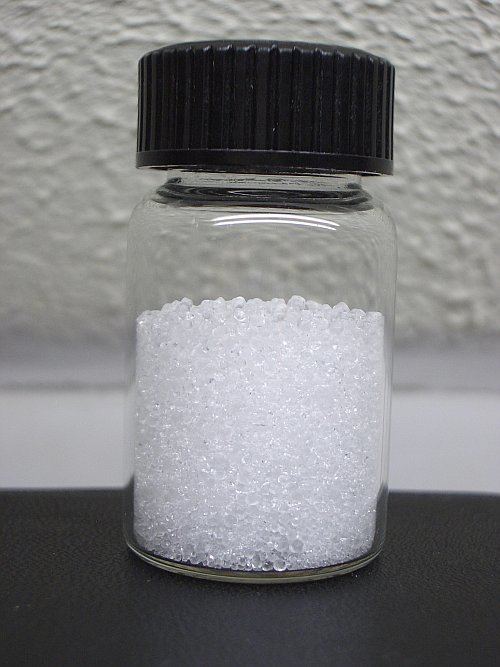Formula KAl(SO4)2 Melting point 92.5 °C Boiling point 200 °C | Molar mass 474.3884 g/mol Density 1.76 g/cm³ Appearance white small crystals | |
 | ||
Potassium alum, potash alum, or potassium aluminum sulfate is a chemical compound: the potassium double sulfate of aluminium. Its chemical formula is KAl(SO4)2 and it is commonly found in its dodecahydrate form as KAl(SO4)2·12H2O. Alum is the common name for this chemical compound, given the nomenclature of potassium aluminum sulfate dodecahydrate. It is commonly used in water purification, leather tanning, dyeing, fireproof textiles, and baking powder. It also has cosmetic uses as a deodorant, as an aftershave treatment and as a styptic for minor bleeding from shaving.
Contents
Characteristics
Potassium alum crystallizes in regular octahedra with flattened corners and is very soluble in water. The solution reddens litmus and is an astringent. When heated to nearly a red heat, it gives a porous, friable mass, which is known as "burnt alum". It fuses at 92 °C (198 °F) in its own water of crystallization. "Neutral alum" is obtained by the addition of as much sodium carbonate to a solution of alum as will begin to cause the separation of alumina.
Mineral form and occurrence
Potassium alum or alum-(K) is a naturally occurring sulfate mineral, which typically occurs as encrustations on rocks in areas of weathering and oxidation of sulfide minerals and potassium-bearing minerals. In the past, alum was obtained from alunite, a mineral mined from sulfur-containing volcanic sediments source. Alunite is an associate and likely potassium and aluminium source. It has been reported at Vesuvius, Italy; east of Springsure, Queensland; Alum Cave, Tennessee; Alum Gulch, Santa Cruz County, Arizona and the Philippine island of Cebu. A related mineral is kalinite, a fibrous mineral with formula KAl(SO4)2·11H2O.
Chemical
Medicinal
Culinary
Traditional
Toxicology and safety
Potassium alum may be a weak irritant to the skin.
